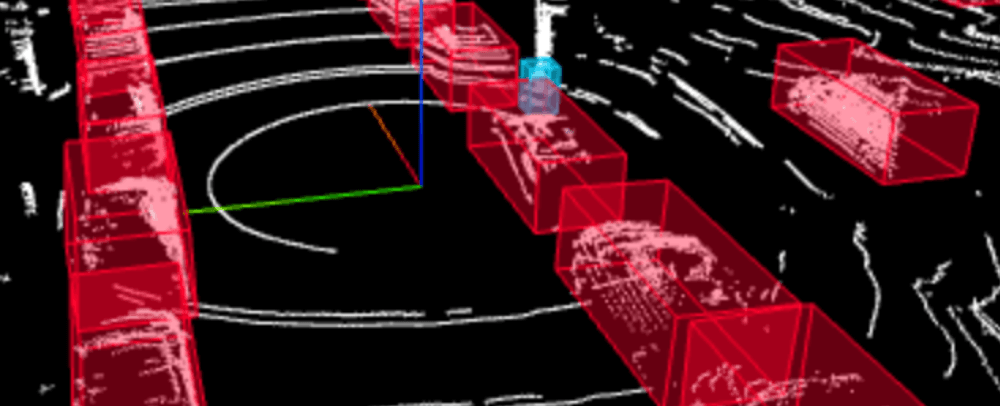A Comprehensive Guide To Data Annotations In LiDAR Technology

LiDAR technology has fundamentally changed how we see and engage with the world around us. LiDAR has emerged as a critical tool in several industries, including autonomous vehicles, urban planning, and environmental monitoring, because of its capacity to produce highly accurate and detailed three-dimensional maps. To offer meaningful context and information, data annotations in LiDAR technology require the process of labeling and categorizing the points within a point cloud.
Go into the world of data annotations in LiDAR technology through this comprehensive blog. Read on!
Introduction To LiDAR Technology
Light Detection and Ranging, or LiDAR, is a type of remote sensing that employs lasers to map the surroundings precisely in three dimensions and estimate distances. It is frequently used in many different industries, such as those that deal with autonomous vehicle perception, surveying, environmental mapping, forestry, archaeology, urban planning, and more. Laser pulses are emitted by LiDAR systems, which then determine how long it takes for the light to bounce back after colliding with an object. The device calculates the distance based on the time-of-flight concept, which establishes the round-trip time of the light pulses.
Importance Of Data Annotations In LiDAR Technology
By giving the raw point cloud data significant context and information, data annotations play a crucial role in LiDAR technology. Here are some significant justifications for the significance of data annotations in LiDAR:
Object Detection And Recognition
Accurate object detection and recognition are made possible by annotations, which help identify and classify items inside the LiDAR point cloud. LiDAR systems can analyze the environment and make knowledgeable decisions by annotating items like vehicles, pedestrians, buildings, and trees.
Semantic Segmentation
The LiDAR point cloud’s points or regions are given meaningful labels using semantic segmentation annotations. Applications requiring the accurate identification and analysis of objects and properties, such as urban planning and environmental monitoring, benefit from semantic segmentation annotations.
Instance Segmentation
By distinguishing between instances of the same object class, instance segmentation annotations go beyond semantic segmentation. For applications like surveillance and enhanced driver assistance systems, instance segmentation delivers in-depth real-time data.
Road Safety
Road signs, lane markers, and other components associated with traffic monitoring can all be labeled using LiDAR data annotations. Lane-keeping, lane switching, and traffic signal awareness are all made more accessible by annotated lane markings and road signs.
Training Machine Learning Algorithms
Data annotations are crucial to train machine learning algorithms to carry out tasks like object detection, semantic segmentation, and instance segmentation. Using annotated LiDAR data as labeled training data, algorithms can recognize patterns and make precise predictions.
Development and Evaluation of the System
The development and evaluation of LiDAR-based systems depend heavily on data annotations. Annotated datasets are employed for algorithm and system testing and benchmarking, performance comparison, and innovation in LiDAR technology.
Types Of Data Annotations In LiDAR: An Overview
These are a few of the main types of annotations applied in LiDAR:
3d Bounding Box Annotations (Cuboids): Enhancing Object Detection In LiDAR:
3D bounding box annotations define rectangular cuboids. 3D bounding boxes enable precise object recognition, tracking, and collision avoidance in applications like autonomous cars by providing essential details about an object’s position, orientation, and dimensions.
Semantic Segmentation: Achieving Scene Understanding With LiDAR Data:
Annotations for semantic segmentation apply semantic labels to specific LiDAR point cloud points or regions. Semantic segmentation offers a thorough knowledge of the picture by labeling locations according to their object class (for example, road, building, greenery, or pedestrian).
Instance Segmentation: Fine-Grained Object Recognition In LiDAR:
Instance Segmentation Using individual instances of the same item class inside the LiDAR data, instance segmentation annotations in LiDAR go beyond semantic segmentation. This form of annotation is useful when identifying and tracking various instances of the same item is necessary.
3d Point Cloud Annotations: Enabling Accurate 3d Object Localization:
In 3D point cloud annotations, individual points in the LiDAR data are annotated to represent specific objects or features. This type of annotation enables the accurate localization of objects in three dimensions.
Lane And Road Marking Annotations: Supporting Autonomous Driving Systems:
Road markings such as lane boundaries, crosswalks, and road signs are labeled as part of lane and road marking annotations. These annotations are crucial for autonomous driving systems to recognize and traverse roads accurately.
Depth Estimation Annotations: Enhancing Distance Perception in LiDAR
Enhancing Distance Perception In LiDAR: Depth estimates tell you how far away items are in the scene from the LiDAR sensor technology. This form of annotation supports activities like path planning, 3D reconstruction, and obstacle avoidance.
Anomaly And Event Annotations: Analyzing LiDAR Data for Insights
Finding and labeling anomalous or important occurrences within the LiDAR data is an anomaly and event annotation. This type of annotation supports insights, anomaly detection, and event recognition in the analysis of LiDAR data.
Best Practices For High-Quality Data Annotations In LiDAR
The following are some best practices to follow to produce accurate and worthwhile annotations in LiDAR data:
Create Comprehensive Annotation Guidelines
Create detailed annotation guidelines that outline the requirements for various annotation kinds. Unambiguous rules promote uniformity and make it easier for annotators to comprehend labeling requirements.
Implement stringent quality control procedures
Implement stringent quality control procedures to ensure the annotations are accurate and consistent. Review annotated data frequently to spot discrepancies, mistakes, or labeling problems.
Create a group of knowledgeable annotators
Expert annotators can better understand the data and provide accurate annotations, which lowers errors and raises the overall quality of labeled datasets.
Iterative annotation method to review and improve
Consider using an iterative annotation method to review and improve preliminary annotations throughout successive iterations. This method ensures that the final annotations satisfy the appropriate quality requirements and enables the rectification of any errors or discrepancies.
Use numerous Annotators
If possible, use numerous annotators for cross-validation. Multiple annotators can offer a variety of viewpoints and aid in spotting any flaws or ambiguities in the annotations.
Continuous Training and Feedback
To help annotators better comprehend the annotation rules and develop their annotation skills, give them ongoing training and feedback. A collaborative annotation environment can be fostered by holding regular meetings, workshops, and knowledge-sharing sessions.
Documentation and version control
Keep thorough records of the annotation procedure, including the rules for annotation, the software programs used, and any alterations made.
Maintain Current Industry Standards
Keep up with the most recent developments, studies, and best practices in LiDAR data annotation. To guarantee that annotations stay accurate and high-quality, annotation processes should be continuously adjusted to reflect industry norms and new developments.
Real-World Applications And Benefits Of LiDAR Data Annotations
Here are a few prominent uses and advantages that data annotations provide for specific fields:
Autonomous vehicles
Annotations to LiDAR data are essential for the creation of autonomous cars. Vehicles can maneuver safely and make informed judgments thanks to annotations’ ability to enable object identification, recognition, and tracking.
Urban planning
LiDAR data annotations are essential for applications in urban planning. LiDAR systems can produce accurate 3D models of cities by annotating structures such as roads, trees, and other urban features.
Environmental Monitoring
LiDAR technology’s data annotations are useful for environmental monitoring applications. LiDAR systems can help monitor biodiversity, forest health, coastal erosion, and land-use changes by annotating vegetation, terrain, water bodies, and other natural characteristics.
Archaeology
LiDAR data annotations have significant uses in the study of archaeology and the preservation of cultural resources. LiDAR technologies can help with site mapping, reconstruction, and analysis by annotating archaeological sites, historic buildings, and topographical characteristics.
Infrastructure Development
LiDAR data annotations are useful for projects involving infrastructure construction. LiDAR systems can help plan, design, and maintain by annotating roads, bridges, power lines, and other infrastructure components.
Challenges And Solutions In The LiDAR Data Annotation Process
Following are some typical issues and potential solutions:
Scalability and Volume
Annotation jobs can be made difficult by the sheer volume of LiDAR data. Automated or semi-automated annotation approaches can solve this problem, hastening the annotation process using machine learning algorithms, machine vision and computer vision techniques.
Subjectivity and inter-annotator variability
Subjectivity and inter-annotator variability are two factors that might affect annotation tasks and cause inter-annotator variability. This variability can be decreased and reliable; high-quality annotations can be ensured with the help of clear annotation rules and ongoing training sessions.
Complex Data and Occlusion
Complex scenes with obscured items or overlapping structures may be present in LiDAR data. These difficulties can be overcome using specialized annotation approaches, such as multi-view annotation or 3D cuboid annotations, to precisely label items in complicated situations.
Data Labeling Bias
Human error or prejudicial attitudes may lead to annotation bias. Multiple annotators, metrics of inter-annotator agreement, and routine quality control checks can all help to reduce labeling bias and assure more accurate annotations.
Data Annotation Tool Selection
The selection of the appropriate data annotation tool is essential for accurate and effective annotation. To properly annotate LiDAR data, choosing devices with features like 3D annotation and integration with LiDAR software operations is critical.
Data security and privacy
LiDAR data may include private or sensitive information about specific people or places. Security and privacy issues can be resolved during the annotation process by implementing data anonymization techniques and ensuring that data protection laws are followed.
Let Co-one Handle All LiDAR Data Management
Co-one offers cutting-edge data annotation services specializing in LiDAR technology. Our annotating methods and expert labeling precision enable autonomous vehicle creators to create reliable perception models. Co-one’s Data Annotation Management platform allows you to follow data annotations in real-time. To achieve high-quality annotations, contact us today!


